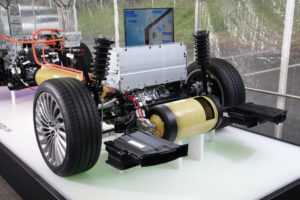- Latest news
- Database Update Crash Recovery System March 2025
- Online CRS Database: No more manual updates!
- Database Update Crash Recovery System February 2025
- Bliksund’s bold expansion
- Database Update Crash Recovery System January 2025
- Update in our Crash Recovery System
- Show or hide CRS buttons and categories
- Database Update Crash Recovery System December 2024
- Database Update Crash Recovery System November 2024
- Handle with Care: Navigating Complex Car Doors with CRS
- Latest news
- Database Update Crash Recovery System March 2025
- Online CRS Database: No more manual updates!
- Database Update Crash Recovery System February 2025
- Bliksund’s bold expansion
- Database Update Crash Recovery System January 2025
- Update in our Crash Recovery System
- Show or hide CRS buttons and categories
- Database Update Crash Recovery System December 2024
- Database Update Crash Recovery System November 2024
- Handle with Care: Navigating Complex Car Doors with CRS
Safety consequences of hydrogen vehicles
Hydrogen cars are still quite rare in the Netherlands, almost 300 are currently registered. That number is expected to increase to 15,000 by 2025 and possibly to 300,000 by 2030 (source Shell.nl). Although the number of hydrogen vehicles is still low and the chance of an accident is still limited, it has occurred.
Hydrogen cars include many safety provisions. In the passenger area and the engine compartment, measurements are constantly being made in order to detect any hydrogen gas leak. Hydrogen is odourless, so inbuilt technical devices are necessary to spot a leak. If the vehicle measures an internal leak, it turns itself off.
Accidents with hydrogen vehicles
At present, most hydrogen vehicles are exploited by companies seeking to visibly show off their ambitious “green credentials”. However, there are also already a few individuals with vehicles of this kind, and for them it is less important to be recognizable. That makes being able to look up the registration number in the CRS essential! There you will find all the relevant information on the vehicle, including how to deactivate it, as described in detail by the manufacturer. From the outside, aside from the stickers, a hydrogen vehicle cannot really be distinguished from an ordinary vehicle. For example, the vehicle only has one fuel tank opening, which resembles that of a CNG filling adapter, but labelled “hydrogen”. So it is very important to gather information in advance!
A great challenge for the person providing assistance is that almost all the parts of a hydrogen vehicle are neatly hidden away behind panels and protective plates. The hydrogen tanks are concealed under the vehicle in the base plate, backseat and boot. If you look hard under the vehicle, you will probably be able to make out the discharge pipes of the safety vents, but you do have to have a technical eye for that. Under the bonnet you will probably quickly recognize the orange electrical cables.
Since a hydrogen vehicle directly generates electricity for propulsion, the high voltage batteries are not very large. These batteries are only intended for the storage of braking energy (regeneration) and for the short term provision of extra power when accelerating, after which the fuel cell immediately increases production of power.
Hydrogen is very flammable
Damage to the hydrogen tank can, of course, occur after an accident. The measurement of hydrogen is very difficult due to the high rate of ascent. Nevertheless, precautionary measures are still very important!
Videos
We have made a number of videos of the hydroelectric Toyota Mirai to show what to pay attention to with a hydrogen car, such as the safety vent and shut-off valve, the hydrogen discharge pipe and the lithium-ion (Li-Ion) battery pack. These components are not obvious because of the cover panels, but they are very much as is shown in the CRS. So you’ll know if you look it up!
Crash Recovery System – Know what’s inside, see what to do!
Video 1 – Underside with protective plates
Video 2 – Important components on underside
Video 3 – Lithium Ion (Li-Ion) battery pack


